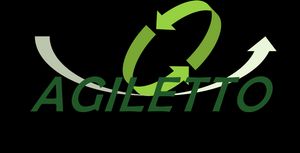Agile Is Not Dead—It’s Evolving: The Future Beyond Agile
The question of whether Agile is dead continues to ignite debate. Some critics point to studies claiming a 268% higher failure rate for Agile projects, presenting this as proof that Agile has reached the end of its usefulness. But before we jump to conclusions, there’s a more fundamental question we need to ask: What do we mean by failure?

Agile was never intended to be a universal solution for all organizational challenges. Instead, it emerged as a response to the growing complexity and uncertainty of software development—and, more broadly, the need for organizations to become more adaptive in a volatile world. Agile was about embracing the complexity, not pretending we could control it. To call Agile a failure based on traditional metrics (like missed deadlines or budget overruns) is to miss its very purpose.
In this article, I will examine the misconceptions surrounding Agile, explore its real value, and—perhaps most importantly—discuss what comes after Agile. Because Agile is just a step on a larger journey. After Agile, we’re not going back to traditional models, nor is Lean the ultimate answer. What comes next is something far deeper: a shift toward purpose-driven organizations, self-management, and holistic, human-centered leadership.
Defining Failure: Are We Measuring the Right Thing?
When we talk about Agile failure, it’s essential to define what failure means in an Agile context. Is failure about delivering software late or over budget? Or is it about failing to deliver value to stakeholders and customers? In Agile, success isn’t measured by rigid deadlines or strict budgets. Instead, it’s determined by the ability to deliver incremental value, adapt to customer feedback, and ensure satisfaction.
If we measure Agile by traditional metrics—like adherence to initial budgets and timelines—Agile will always look like a failure. But Agile is built to fail fast, so that teams can learn early and adapt, or even pivot to achieve the desired outcome. Failure in Agile isn’t a problem—it’s a feature. Agile doesn’t pretend to know everything upfront, but instead offers the flexibility to pivot when necessary. I
On the other hand, Waterfall approaches rarely measure outcomes. And if they do, it’s too late to fix them. It’s easy to see why a direct comparison using rigid metrics might mislead us into thinking Agile isn’t working when, in reality, it’s designed for constant adjustment and learning.
The Real Issue: Are We Misunderstanding Agile?
In my recent series on Agile transformation failures, I argue that many so-called failures aren’t because Agile doesn’t work—they happen because organizations misunderstand what Agile is. Too often, companies treat Agile like a set of rituals—sprints, stand-ups, retrospectives—without embracing its deeper philosophy. The issue isn’t with Agile itself; it’s with how we implement it.
Agile is not about a checklist of processes. It's about creating systems that continuously learn and adapt. Organizations that merely go through the motions of doing Agile—without adopting the necessary cultural and mindset shifts—set themselves up for disappointment.
Some people claim that "everyone is leaving SAFe" or that "Scrum has reached its limits." But these critiques miss a key point: No methodology, on its own, can drive cultural change. Scrum, SAFe, and other Agile frameworks are just tools. Tools that only work when paired with a real commitment to learning, experimentation, and openness. Without cultural evolution, these frameworks fail to live up to their potential.
When Agile Isn’t the Answer
There’s another myth we need to dispel: the belief that Agile is always superior to Waterfall, or that it should be applied universally. This isn’t true. Agile was built for complex, unpredictable environments—what we call the VUCA world (Volatile, Uncertain, Complex, and Ambiguous). When we’re working in environments where the solution is unknown and experimentation is needed, Agile excels.
But in clear or complicated situations—where the problem and solution can be defined up front—Agile may not be the best choice. Large infrastructure projects, for example, with clearly understood requirements and a predictable pathway, can benefit from the structure of Waterfall. Similarly, when implementing pre-defined solutions for multiple customers, a Waterfall approach may be more efficient.
However,in novel situations—such as greenfield applications, research, or uncertain environments—the Agile mindset truly excels.
Stop Doing Agile. Start Being Agile.
Agile isn’t just a process—it’s a mindset. Too many organizations fall into the trap of doing Agile but forget to be Agile. Agile is not a checklist, and it’s certainly not just a series of rituals. It’s a cultural shift that requires organizations to learn, adapt, and improve continuously.
Instead of asking whether Agile is dead, the real question we should be asking is: How do we evolve beyond Agile? How do we build organizations that are not only adaptable but also driven by a sense of purpose, autonomy, and connection to the broader world?
Beyond Agile: What’s Next?
But here’s the real challenging question: What's beyond Agile?
Agile isn’t the final destination. It’s a step toward something larger, something deeper. Some argue that Lean is the natural next step. But Lean and Agile are not mutually exclusive—they go hand in hand. Agile creates the flow, Lean optimizes it. But beyond efficiency and flow lies something even more critical: the higher purpose of an organization.
Beyond Agile, the focus might shift to building organizations driven by a higher purpose, with self-managing teams and leadership that operates with a holistic view. The future of work isn’t about tools and processes—it’s about creating environments where people can bring their whole selves to work, where innovation thrives because the culture supports autonomy and mastery. And purpose.
Beyond Agile lies getting rid of hierarchical, rigid structures that stifle creativity and limit the potential of teams. The future is about self-management, where teams have the autonomy to make decisions, adapt to challenges, co-create their solutions and take responsibility of their own development.
This is more than just Agile or Lean. It’s about organizations that cater to the whole person—and beyond that, to the whole planet. It’s about recognizing that people aren’t just cogs in a machine but individuals who thrive when their work aligns with a deeper purpose. In this model, leadership doesn’t dictate; it guides, empowers, and supports.
The organizations of the future will be ones that balance adaptability with a higher mission, recognizing that true innovation comes when people feel connected to the larger impact they’re making. Agile is just one step toward that vision.
If we lack the resilience to shift the culture towards an Agile mindset and instead revert to a plan-driven waterfall approach, we will never be able to take the next step–beyond Agile.
Conclusion: Agile Is Not Dead—It’s Evolving
Agile is far from dead. It represents a natural evolution in how organizations transform into learning organizations. To reject Agile is to reject the pursuit of continuous learning and adaptability. And there’s no turning back—we cannot simply revert to the rigid structures of fixed deadlines, fixed content, and fixed budgets.
However, we must also recognize that Agile is just the beginning. Beyond Agile, we move toward purpose-driven, self-managing, and holistic organizations. The future is about balance—balancing the efficiency of Lean, the adaptability of Agile, and the higher purpose that guides us. Balancing life and work. Balancing the needs of the planet with those of organizations. Balancing humans and humanity.
Agile isn’t dead—it’s evolving. But the evolution doesn’t stop here. The next step is to create organizations that truly unlock human potential. The rewards are immense for those willing to embrace the journey.
So, is Agile dead? Absolutely not. But it’s time to rethink how we use it—and, more importantly, what comes next. What are your thoughts?
Reference
- Study finds 268% higher failure rates for Agile software projects, R Speed, June 2024.
Last updated Sep 10, 2024
